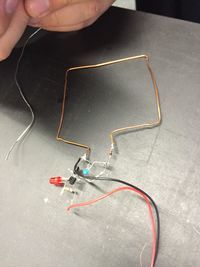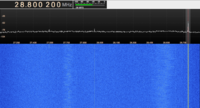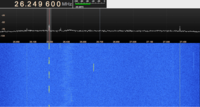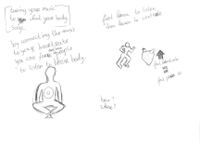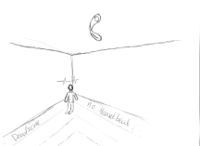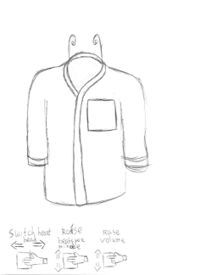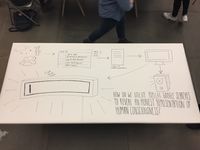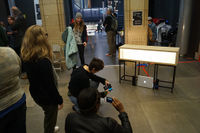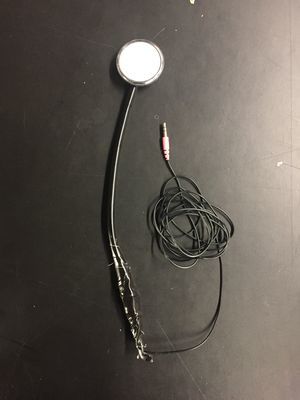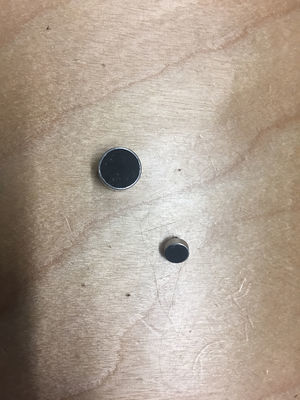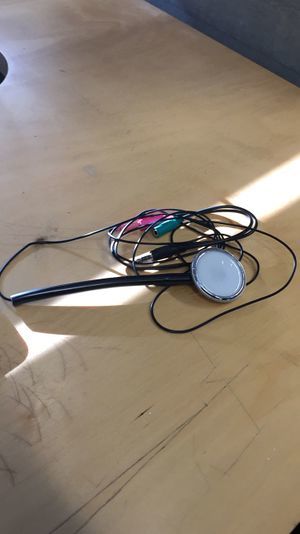User:Kenah/Unravel the Code V
Contents
Unravel the Code V Q9
Interesting works
Human Antenna
What I found interesting about this project, is that is has a whole new way of letting people interact with the installation that is basically a radio. It uses the person and makes it a part of it.
http://www.kraeutli.com/index.php/2009/09/01/human-antenna/
A World Beyond the Loudspeaker
What I found interesting about this project, is that is has a whole new way of letting people interact with the installation that is basically a radio. It uses the person and makes it a part of it.
http://www.evdh.net/awbl/
Immateriality as Material
What I found interesting about this project, is that is has a whole new way of letting people interact with the installation that is basically a radio. It uses the person and makes it a part of it.
http://www.trendhunter.com/trends/immateriality-as-material
Walkthrough
the simplicity is really dope in this project. its just 1500 speakers echt playing a certain frequency of sound. I like the way they let people experience the different octaves of sound.
https://vimeo.com/45225412
An Eerie Geiger Counter Chandelier That Flashes and Clicks When It Detects Nearby Radiation
Just like the Immateriality as Material project, I like the way they found to make radiation visible or noticeable. Also, the cultural relevance of the project is very interesting. It's like a warning and a tribute to the Fukushima Daiichi nuclear disaster
http://laughingsquid.com/an-eerie-geiger-counter-chandelier-that-flashes-and-clicks-when-it-detects-nearby-radiation/
Wallwave Vibrations
I never really see science and art really crossover unless it's an interactive installation with lights and sound and mechanics. that is why I really like this project. making electromagnetic waves, visible through sculpting.
http://www.mymodernmet.com/profiles/blogs/loris-cecchini-wallwave-vibrations-extruding-bodies-sculptures#.V5_m8kpHWbU.pinterest
Analog Sensing Devices
Catching the signals
last year we learned a little bit about electronics and how to make your concepts come to life. But is was nowhere near what we had to do in our first workshop. In this workshop, we had to get a quick understanding of radio waves and how to make a receiver that catches a certain frequency. Me and two other students worked together on an amplified receiver. there was a simpler one but a big part of the group already choose to do it and I also looked at it as a challenge to see if we could figure out how to make it with little understanding of what we were making. The first thing we learned was that de size of the antenna had a big part in what it would receive. The second thing i learned is that soldering and reading schematics is still pretty hard to do right. I made one bad connection and the LED light responded but only if you touched it with your hands. it never responded to the signal. Simon eventually helped us out and then it worked like a charm.
What are radiowaves
In the First real class we had with Roel he showed us how to work with the wiki. After that, we went in deep. Because none of us were really familiar with the science of radio waves (Because the last time we had lessons on it was in the middelbare school), he had to teach us it all over again. he explained what the different wavelengths are and explained more on how broad the radio wave spectrum really is. After that intense class, he gave us our own antenna so we could test it out. After we installed all the software needed I tried getting commercial radio stations to listen to just to test if I understood how it all worked.
Whats can i find in the air
The next class we had with Roel we had to go out en discover other signals and try to identify them. Jeroen and I Wanted to go to a high open area to see what we could find. So we choose to go to the roof of the V&D garage. We managed to get some interesting signals. Even getting one that almost getting a clear reading on a vocal transmission.
Signals as sounds
The last Assignment we got was to look at the sound we found interesting and make something out of it. For me, all the audio signals were just noise. I'm acostumed to listen to music and it has structure en rhythm in it what makes it understandable for me and lets me enjoy it. If I am someone that has that opinion then there will certainly be more on this planet. So I tried to decode de signals by repurposing it to music or at least to the best of my abilities. in the link below you will find my experiment.
An imaginary radio object
Now-a-days people live into much of a rush. everything is fast pace and there is a lot of stress. Everybody pushes through till their body gives out. So my first version of my imaginary radio was device, that would allow you and your body to have a better connection. By using your bodies heart rate it would tune the radio to s specific channel or song. so if you are stress or excited the radio would play you something that uptempo. and if you are calm en relaxed to music would match that mood. If you here what your body is going threw you could eventually also learn to control it for example while exercising. But after some feedback and a discussion i came to the conclusion that listening to the heart beat also had a very deep and poetic effect. so i continues exploring options that would bring me closer to listening to the heart beat.
with listening to the heartbeat in mind i tried to think of something new. i came up with an installation that would be in a room. by moving through the space, you could tune the radio to a specific heart rate. but after consulting with Jon he told I got convinced that keeping it in a room would take away the interest of it because it would have needed more meaning to really make it relevant for such a space. another idea i had, was a patch that you would apply on you chest in the area of your heart and you could tune your heart to someone else's.
Then I came up with my final idea for now. it's a shirt or a t-shirt or a vest with touch sensitive area over the heart. by using gestures over the pad you could control te radio simple swipes would let you navigate heartbeats or raise the heart beat and change the volume.
Research on the heart
Defibrillators
in this video, I found an infographic video on how the heartbeats gets controlled by a Defibrillators. It gives the heart little electrical shocks for if the tempo has to stay up. But if the heartbeat runs too fast it gives a big electrical pulse to shock it back to an slower rhythm. it also gives a clear view of how one looks.
effect of listening to heartbeats
In this artical they explaine the effects of listening to heartbeats. It appears to have a really intimate feeling to the listener. they explain it to be the same as looking into someones eyes
Recording heartbeats
I found a video explaining how to get your computer to record the heartbeat using a stethoscope.
MICA Workshop
Yeeey we got visitors!! Several American students from MICA came to the Netherlands. Together with the fourth year students we got the do a workshop. The workshop was again all about radio waves. all the students were divided in four groups and each got their own assignment to work on. The First day was an introduction day. Everyone gathered in front of the Markthal so we could give a little tour of it. Unfortunately, I couldn't stay to see all the presentations given.
The second day was when the workshop really started. I was in the first team and the team assignment was called "Inter-galactic communication". We had to think of a message that we could transmit into space, so it was a really conceptual project. Teachers that came by gave us a few examples. One being a golden plate with sound recordings of de artist girlfriend engraved in it and some additional information on human race. We found the romantic and poetic idea of it really interesting. VOYAGER GOLDEN RECORD.
Another project send into space was more scientific. they made a system where they used binary code and colors to make an image that would explain what the human race is. ARECIBO MESSAGE
So we started thinking and trying to find insights that could lead to a strong concept. First thing we noticed in the other two project was that they were both a representation of human told by one person perspective. and we found it too big of a task to do it our selfs. because what are you going to focus on is you have to tell it and if you explain is it going to be an honest representation of the human race. So we wanted to find a way to let everyone tell what the human race is about. Twitter was a good medium to use that was easily accessible to get the type of information we needed. By Giving out or collecting hashtags we could collect a massive about of data. But that was also the problem. the information could be overwhelming.
So we looked further. Next medium we came up with was google. google already collects data and gives you the top suggestions when searching. When we found out if it was possible to collect de top suggestions we just had to figure out what the question starters could be. we made list, of questions to test. We noticed that "Am i" "Should I" "Does he" "Does she" all gave interesting results. So we set a team up to write the code so we had everything ready and that the computer could read the questions out loud. After that, we came together again to find a good context to present our idea. We tried to find places or moments where you were confronted with questions. we could have just put a laptop with speakers in the exhibition and we found that it would have an impact. But everyone agreed that making an installation out of it would bring it to a next level. There were some ideas like for example to make it a religious thing, But we couldn't find a good way to visualise it. The next thing we came up with is that the only other place where question float around, is in your own mind. So we wanted to bring out that voice and not only let whatever is out there see who and how we are at that moment in time, but also let the people experiencing the installation have a reflective moment. Eventually, we decided on making a physical google search bar with a blinking cursor. Together with the audio that read the questions out loud, it demonstrated the insecurities and the thought process we as humans deal in our everyday lives.
Q10
Research
At the start of the tenth quarter, I was still fascinated by the idea a broadcasting heartbeat sounds. So I continued looking into it t maybe find some context or social impact it could have.
'speaker installation' https://vimeo.com/46536144
At first, I looked into building a big scale speaker/amplifier. The installation by itself would already be intriguing. But what I wanted to do is put it in the school's hallway in the Blaak building during the openday. the acoustics there also echo the sound and thereby amplified it even more. I wanted to collect heartbeats of students and play them in a sequence. This would be the symbolic metaphor saying that the students of WDKA are the beating heart of the school. But this would have meant losing the intimacy because the visitors don't know what students they are listening to.
'Directional speaker' https://vimeo.com/46536144
I also look into the use of directional speakers but I couldn't find any good reason why I could use it or what added value it would have given. It could have been a surprise but after that there isn't a great deal why people would have wanted to interact with it.
DIY Digital Stethoscope
To record the heartbeat I need to build a device or mic that will capture the low frequencies. Doctors use Stethoscope to amplify the sounds to have a clearer sound. Nowadays you can buy digital stethoscopes but they can be very pricey. In order to find alternatives that I could build or make myself, I started to look around on youtube. In the video below there is a DIY stethoscope that looks easy to make and is versatile. https://www.youtube.com/watch?v=dFEvfgLTblo https://drive.google.com/open?id=0B8M1_VWf4lS2LVVEMEZvTnVreTA
I found myself a stethoscope to work with and bought a microphone. So I followed the tutorial as instructed in de video to the extent that it was possible with the stuff I had.
My first attempt I managed to record sound but it was unclear because of the way I constructed it. I cut up the tube so I could fit the mic in that was too big to squeeze it in. This resulted in the recording in a lot of noise and a very ugly looking mic.
https://drive.google.com/open?id=0B8M1_VWf4lS2bXlPSm5kNEk3Z0E
After this, I had to find a smaller mic to fit in. after breaking two mics by trying to force it in the tube. I figured out that I could open the stethoscope where the membrane is. I made the tube shorter and pulled the wire through it. after that, I added a knot to secure the wire and protect the mic. after soldering the mic I could screw it back on and test it out again. the sound was faint but clearer than the first mic.
https://drive.google.com/file/d/0B8M1_VWf4lS2ZmZFTEtPbWNQUzA/view?usp=sharing
Low pass filter
To make the heartbeat sound a little clearer I had to play around with an EQ. what I had to do is make the audio file sound like it was underwater. You do this by dimming down all the high-frequency sounds so you can only hear the low frequency aka the heartbeat. https://drive.google.com/file/d/0B8M1_VWf4lS2Y2RkcUdJSVI0ZmM/view?usp=sharing
Wearable
